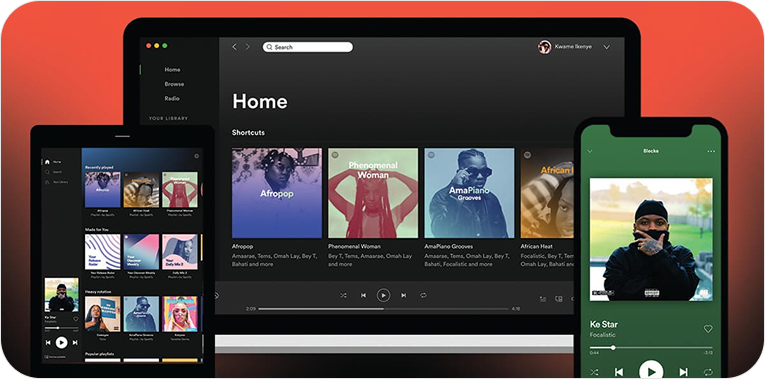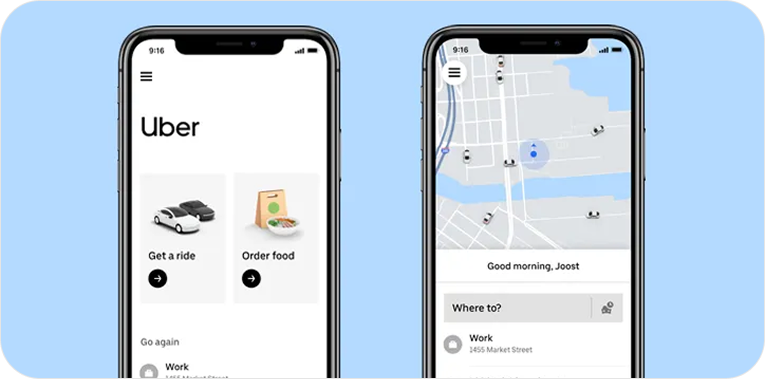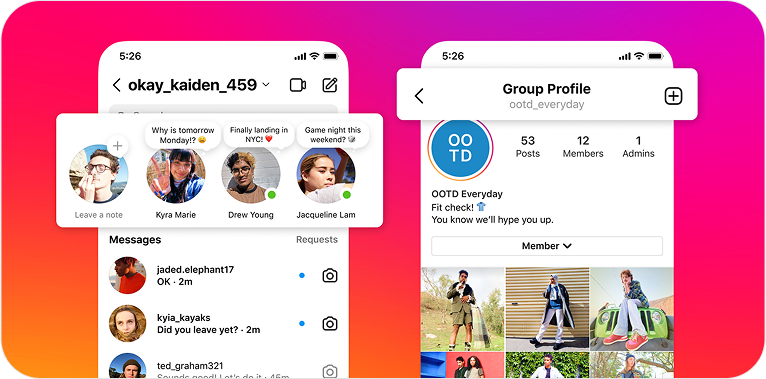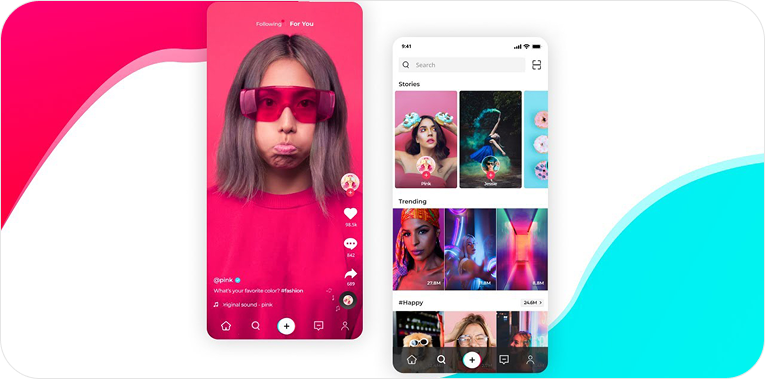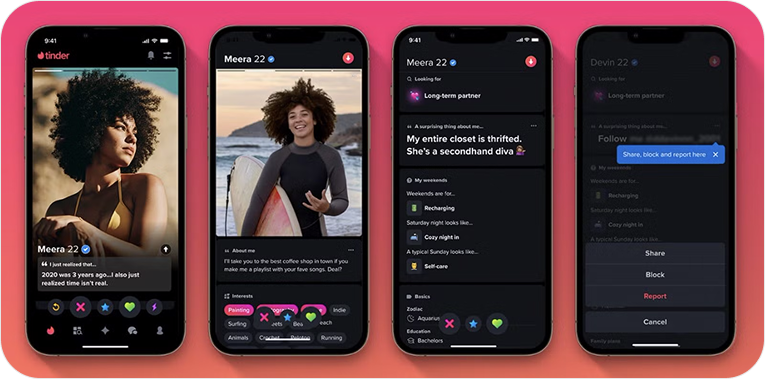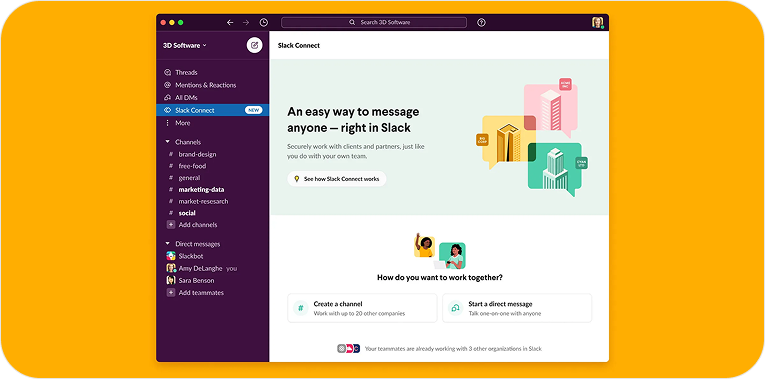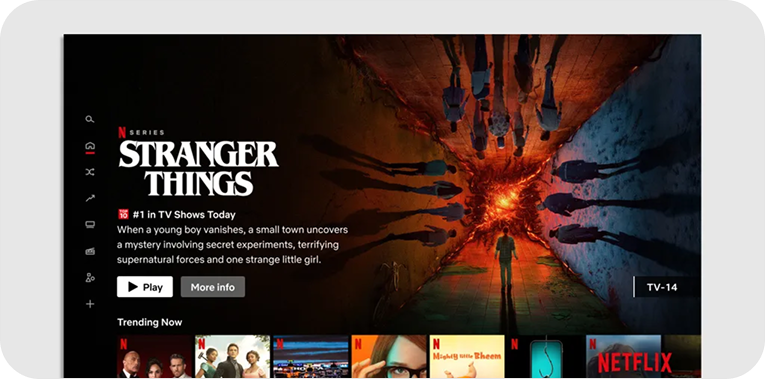Considering building a mobile app but unsure about the design costs? Let’s simplify the process for you.
Take a moment to glance at your smartphone. How many apps do you use daily? From ordering food to managing finances, apps are a staple in our routines. In 2023, global app downloads hit 257 billion, with revenue projections for 2025 exceeding $613 billion.
The cost of creating these apps can feel overwhelming, especially for startups. While no article can give you an exact price tag (every app is unique), we can break down the factors influencing costs and share tips to estimate your budget.
By the end, you’ll know what to expect and how to confidently plan your app design expenses.
Ready for a tailored estimate right now?
Contact us now for a personalized quote on your mobile app project.
How Much Does It Cost to Build an App in 2025?
Designing and developing a mobile app comes with a wide range of costs, depending on factors like complexity, features, integrations, and the technology stack. Whether you're planning a straightforward app or a feature-rich platform, each decision shapes the final price.
App Development Cost and Timeline Overview:
App Type
Estimated Cost
Development Time
Simple App
$9,000–$70,000
1–4 months
Basic App
$50,000–$200,000
3–7 months
Complex App
From $250,000
9+ months

The most reliable way to get a clear estimate for your app is by consulting directly with experienced developers. If you don’t have a team yet, several factors must be considered when calculating costs:
- Target platforms
- Chosen cooperation model
- Depth of third-party integrations
- Ongoing maintenance and updates
- Scope of features and functionality
- Quality assurance and testing phase
- Development team’s location and expertise level
- Development process steps, including milestones
- Number of screens and the overall design complexity
Each of these elements influences the timeline and budget for your project. In the sections below, we’ll outline how these factors impact app design and development costs.
Mobile App Design & Development Statistics by the End of 2024
Before diving into the factors influencing app design pricing, here’s an overview of the latest data on app development costs, trends, market impact from the past year, and expectations for 2025 and beyond.
Global Usage and Revenue Growth
- Global app downloads reached 110 billion in 2024.
- Google Play spending declined by 1.5%, totaling $35.7 billion.
- Mobile users worldwide spend nearly 16 billion hours using mobile apps.
- Spending on the App Store in 2024 increased by 24%, reaching $91.6 billion.
- In 2024, global consumer spending on mobile apps and games reached $127 billion, a 15.7% increase from 2023.
- The mobile app market is projected to reach $756 billion in revenue by 2027, with a compound annual growth rate (CAGR) of 8.58%.
Market Trends
-
iOS Markets In-App Revenue
- During the first half of 2024, the United States led iOS markets, generating nearly $6.5 billion in in-app revenues.
- China ranked as the second-largest iOS market, with consumers spending over $4.5 billion on in-app purchases. Android Markets In-App Revenue
- In the first half of 2024, the United States generated almost$2 billion in revenues from the Google Play Store.
- Android users in Japan spent approximately $421 million during the same period.
- The Google Play Store in the United Kingdom reported in-app revenues of around $322.5 million in the first half of 2024.
The global app economy showed signs of recovery in 2024, rebounding from the slowdown of 2022, particularly in consumer spending. These statistics reveal that mobile apps are more than a passing trend—they've become indispensable for business success.
What Factors Affect Mobile App Design Cost?
At Giraffe Software, we hear plenty of innovative app ideas from startup founders and enterprise leaders worldwide. One of their first questions is, “What will it cost to design my app?”
Even with years of experience, providing an exact estimate without diving into specifics is impossible. The cost of designing a mobile app depends on multiple factors, each contributing to the overall price. Let’s take a closer look at the variables that shape these design costs. Be ready to answer some questions.
Which platforms are you targeting?
The choice of platform significantly affects app design and development costs. However, it’s crucial to distinguish between design and development when discussing platform considerations.
In development, platforms are usually divided into:
- Native apps (built separately for iOS or Android).
- Web apps (accessible via browsers).
- Cross-platform solutions (using frameworks like Flutter or React Native).
When focusing on design, the division is simpler:
- Mobile platforms (encompassing Android and iOS).
- Web platforms (optimized for browsers).
Android and iOS design guidelines are often considered as one platform for design purposes as they share enough overlapping design principles (e.g., touch gestures, navigation patterns, and so on).
However, Android designs may incur higher costs due to the need for compatibility across a wider range of devices, screen sizes, and resolutions compared to iOS.
As a general rule, designing the UX/UI for a single platform (mobile or web) typically takes half the time required for the front-end development of the same platform. For example, if the front-end development for a mobile app takes 200 hours, the UX/UI design usually takes around 100 hours.
Integration with third-party services
The primary cost driver is time—integrating third-party services requires additional development hours to ensure smooth communication with external APIs, secure data handling, and proper functionality.
Testing is also essential to confirm the integrations work across all devices and user scenarios, especially for more complex features like payments or maps.
Moreover, after launch, third-party services may update their APIs, change pricing models, or add new features, requiring ongoing maintenance.
While some services offer free tiers, many charge based on usage or advanced features, affecting the overall cost. Let’s look at which integrations with third-party services will influence your bottom line the most in more detail:
- Payment processing: Integrating with Stripe or PayPal allows users to make purchases within the app. These services typically charge transaction fees, but the development cost will also include the time needed to integrate and ensure secure payment processing.
- Social media integration: Allowing users to log in with Facebook, Google, or Twitter can improve the user experience, but this requires configuring APIs and dealing with privacy concerns. Integration costs vary depending on the platforms you want to connect with, and developers may need to account for updates or changes to social media APIs.
- Mapping services: Integrating with APIs like Google Maps or Mapbox can add significant costs if your app requires location-based services. For instance, Google Maps charges based on usage, so heavy usage or adding complex features like real-time traffic or routes can increase the overall cost.
- Analytics: Integrating services like Google Analytics or Firebase Analytics to track user behavior helps optimize app performance. The setup is relatively simple but can add to the development cost, depending on the level of data tracking and reporting required.
- Push notifications: Services like Firebase Cloud Messaging or OneSignal are commonly used for push notifications. Though many services offer free tiers, the cost increases with the volume of messages sent and advanced features like segmentation or targeting.
So, as you can see, the complexity of these integrations and the third-party services used can indeed impact the overall development cost.
The cooperation model you pick
When designing an app, your choice of cooperation model—freelance, in-house team, or staff augmentation—directly impacts costs and outcomes. Here’s how each option stacks up.
Freelance
Freelancers work independently, focusing solely on development while you manage the project direction. This can be the most affordable route, avoiding agency fees or employee benefits.
However, relying on one person carries risks. Delays may arise if they get busy or lack the required skills. Security concerns and communication gaps can also be an issue. Robust reporting and regular check-ins are critical to keeping the project on track.
In-house
In-house teams are fully dedicated to your app, aligning with your business goals, and ready to quickly fix issues or add features. Their direct involvement ensures a deep understanding of your vision.
But building a team takes time and money. Salaries, equipment, and benefits add to costs, and employee turnover can disrupt progress. If a team member leaves, finding and training a replacement takes time, potentially delaying your project.
Staff augmentation
Staff augmentation offers flexibility, letting you hire experts on hourly, daily, or monthly contracts. For long-term projects, dedicated team members provide consistent support. Agencies backing augmented staff often have backup experts to cover absences, minimizing disruptions.
Staff augmentation benefits for designing your app
-
![done mark]() Cost efficiency
Cost efficiency
-
![done mark]() Backup support
Backup support
-
![done mark]() Rapid access to talent
Rapid access to talent
-
![done mark]() Niche expertise
Niche expertise
-
![done mark]() Knowledge exchange
Knowledge exchange
-
![done mark]() Global talent pool
Global talent pool
-
![done mark]() Flexibility
Flexibility

Once your app is live, you can scale the team down to just a few specialists for maintenance. While agencies charge more than freelancers, they’re often more affordable than maintaining an in-house team. Outsourcing to regions with lower rates but high-quality talent further reduces costs.
Discover how UK companies save an average of 38% on salaries by augmenting their teams.
Team location
Where your app design team is based directly affects project costs. Regional differences in labor rates, work processes, and cultural factors all play a part in determining both price and quality.
Finding the right balance between quality, speed, and affordability involves more than just choosing the cheapest option. Expertise, communication skills, and the risk of delays or mismanagement are just as important as the hourly rate. Let’s break down the impact of location on costs and outcomes:
Note: Data reflects averages compiled from multiple sources, including Indeed, Glassdoor, and industry reports. Actual figures may vary depending on the designer’s experience, technologies used, or niche requirements.
South Asia

Eastern and Central Europe

Latin America

Other Regions at a Glance
- USA/Canada: Exceptional quality but very high rates, with hourly costs reaching up to $130-150.
- Western Europe: High standards of quality at slightly lower rates than the US, ranging from $60-110 per hour.
- Australia: Competitive expertise with rates of around $110-140 per hour, but higher living costs can make overall project expenses steep.
Real Costs by Location
Here’s a snapshot of estimated costs for an average-complexity app design project requiring approximately 290 hours of work:
Location
Average Cost ($)
USA
41,000
UK
36,000
Western Europe
25,000
Eastern and Central Europe
18,000
South Asia
9,000
Latin America
15,000

Struggling to find the right mobile design expert in time?
Let us help you secure top talent fast—reach out today!
Stages of the Design Process Affecting the App’s Cost
Understanding how each phase of the design process affects your budget can help you plan more effectively. Here’s a breakdown of the main stages and their impact on the overall cost of designing your app:
1. Research and strategy
The first phase sets the foundation for the app’s design by defining user needs, business goals, and the competitive landscape. It helps identify target audiences and essential features, ensuring the design aligns with user expectations and business objectives.
- Time: 30–50 hours
Investing time in research prevents costly revisions later by providing a clear direction for the design.
2. UX design (user experience design)
UX design focuses on how the app functions and how users interact. It includes defining user flows, wireframes, and interactions that guide users through the app smoothly. A well-designed UX is at the core of your app’s most vital aspect—user satisfaction.
- Time: 60–100 hours
A well-executed UX design can lower the risk of needing changes after launch and improve user retention.
3. UI design (user interface design)
UI design concerns the app’s visual elements, such as colors, typography, buttons, and icons. It ensures the app is visually appealing and easy to navigate.
- Time: 50-80 hours
Investing in quality UI design enhances the user experience and contributes to overall satisfaction.
4. Prototyping
Prototyping involves creating an interactive model of the app to test functionality. It allows stakeholders to explore the app’s features and helps the team identify and address potential issues before development.
- Time: 60-120 hours
Prototypes are important for refining the design and ensuring the app works across different devices.
5. Testing and quality assurance (QA)
Testing ensures that the app performs as intended. It includes usability and functional testing to catch design flaws and make necessary adjustments. The more thorough the testing, the higher the costs.
- Time: 40-80 hours
Testing guarantees the design works properly on various platforms and reduces the need for post-launch fixes.
Pricing by App Type
As mentioned above, the cost of designing and developing an app depends on factors like its type, complexity, and features. To provide a clearer picture, we've compiled a table showing the estimated costs and development hours for different types of apps. These figures are based on available data and our research.
App Type
Estimated Cost
Estimated Development Hours
iOS App
$75,000 – $500,000
1,200 – 2,000 hours
Android App
$50,000 – $500,000
1,200 – 2,000 hours
Hybrid App
$90,000 – $700,000
1,200 – 2,000 hours
Web App
$60,000 – $300,000
1,200 – 2,000 hours
E-commerce App
$60,000 – $250,000
1,200 – 2,000 hours
Social Media App
$50,000 – $300,000
1,200 – 2,000 hours
Game App
$60,000 – $250,000
1,200 – 2,000 hours
Taxi App
$40,000 – $500,000
1,200 – 2,000 hours
Healthcare App
$50,000 – $400,000
1,200 – 2,000 hours
Learning App
$60,000 – $225,000
900 – 1,200 hours
Video Streaming App
$80,000 – $300,000
1,600 – 2,000 hours
Restaurant App
$40,000 – $150,000
900 – 1,200 hours
Dating App
$40,000 – $300,000
1,400 – 2,000 hours
Food Delivery App
$40,000 – $150,000
900 – 1,200 hours
Community App
$18,000 – $150,000
900 – 1,200 hours
Shopify App
$25,000 – $170,000
900 – 1,200 hours

Tips to Keep Your Mobile App Design Costs Realistic
Creating a mobile app doesn't have to break the bank. You can trim design costs by applying a few smart strategies without sacrificing quality or usability.
1. Start with a clear plan
Planning your app’s design upfront can save a lot of back-and-forth later. Begin by answering a few straightforward questions:
- Which platforms will your app run on? Will it be for iOS, Android, or both?
- How many user types do you have? Apps with multiple user groups (e.g., buyers and sellers, drivers and riders) require distinct designs.
- Does your app need admin support? Think about dashboards or tools for managing users.
- Is it a simple MVP or a fully featured product? An MVP (Minimum Viable Product) is quicker and cheaper to design, and advanced features can increase time and cost.
Additionally, assess the practical aspects of the design:
- Can you use ready-made templates, or do you need custom visuals?
- Is your brand identity established enough to be incorporated into the design?
- Have you outlined user interactions to prevent confusion down the road?
These early decisions avoid costly revisions and keep your project on track.
2. Prioritize features in an MVP
An MVP focuses on only the necessary features for the initial release, helping keep costs manageable while you:
- Test early: Identify core issues and fix them before adding complex features.
- Validate usability: Confirm the design works for real users before expanding.
- Minimize risks: Address technical and design gaps upfront at a lower cost.
- Attract investors: A functional MVP with demonstrated potential can help you secure funding.
This phased approach accelerates time to market while keeping initial costs low. Plus, adding features later is easier once you have user insights and a clearer picture of what’s working.
3. Choose the right team
Things to consider when choosing the design team include:
-
![done mark]() Cost efficiency
Cost efficiency
-
![done mark]() Flexibility and scalability
Flexibility and scalability
-
![done mark]() Feedback and communication
Feedback and communication
-
![done mark]() Cultural fit
Cultural fit
-
![done mark]() Portfolio and technology stack
Portfolio and technology stack
-
![done mark]() Design process and methodology
Design process and methodology
-
![done mark]() Reputation and reviews
Reputation and reviews
-
![done mark]() Post-launch support and maintenance
Post-launch support and maintenance

A skilled and experienced design team can save you money in the long run by getting things right the first time. Look for a portfolio that matches your vision and ask for client references. Clear communication and shared goals with your team make the process more efficient.
Want to Launch Your App 30% Faster?
Use our efficient processes and dedicated team to bring your mobile app to market faster than the competition.
4. Opt for cross-platform design
If your app needs to work on multiple platforms, consider cross-platform design to save time and resources. Using one codebase for both iOS and Android:
- Speeds up feature releases.
- Simplifies bug fixes.
- Reduces development time by reusing code.
Cross-platform tools like Flutter, React Native, and Xamarin offer a nearly native experience; just consider the limitations regarding device-specific features.
5. Look for open-source resources
Open-source design elements like icons, fonts, and templates can significantly reduce costs. Popular resources include:
- Icons: Font Awesome, Material Icons, Feather Icons.
- Fonts: Google Fonts.
- Design Templates: Templated.co, Canva.
Ensure these resources match your app’s branding and meet licensing requirements before using them.
6. Consider offshore or nearshore staff augmentation
Outsourcing design work to teams in other regions can deliver high-quality results at competitive rates. At Giraffe Software, we’ve found that tech talent from Eastern and Central Europe can cut employee costs by up to 38% and contractor expenses by nearly 50%, with savings reaching 52% for certain roles.
Experienced contractors with strong English skills offer flexibility and cost savings for short-term or part-time projects. However, hiring dedicated staff may be more beneficial for longer-term projects.
Giraffe Software offers contractors and full-time employees extensive experience in mobile app design, so contact us to learn more.
Giraffe Software’s Expertise in App Development & Design
Giraffe Software is a trusted mobile app design and development partner with a strong reputation built on years of experience and a highly skilled team. Here's why we're the right fit for your app development needs:
- A Skilled Team: 80% of our developers are mid-level or senior professionals, ensuring high-quality design and innovative solutions for your app.
- 8+ Years of Experience: We have successfully completed over 120 projects, delivering results across multiple industries.
- Faster Time to Market: Our efficient development process reduces time to market by up to 30%, ensuring you get your app faster without sacrificing quality.
- Full Ownership: We take responsibility for every aspect of your project, aiming for impactful, measurable results.
- Expanding Expertise: With over 70 specialists, we provide the right talent to meet your app's specific needs.
To see our work in action, take a look at our case studies. One project we’d like to highlight is our work with ARTOUI, a German art curating company, for which we designed a mobile app to support their e-commerce platform.

ARTOUI
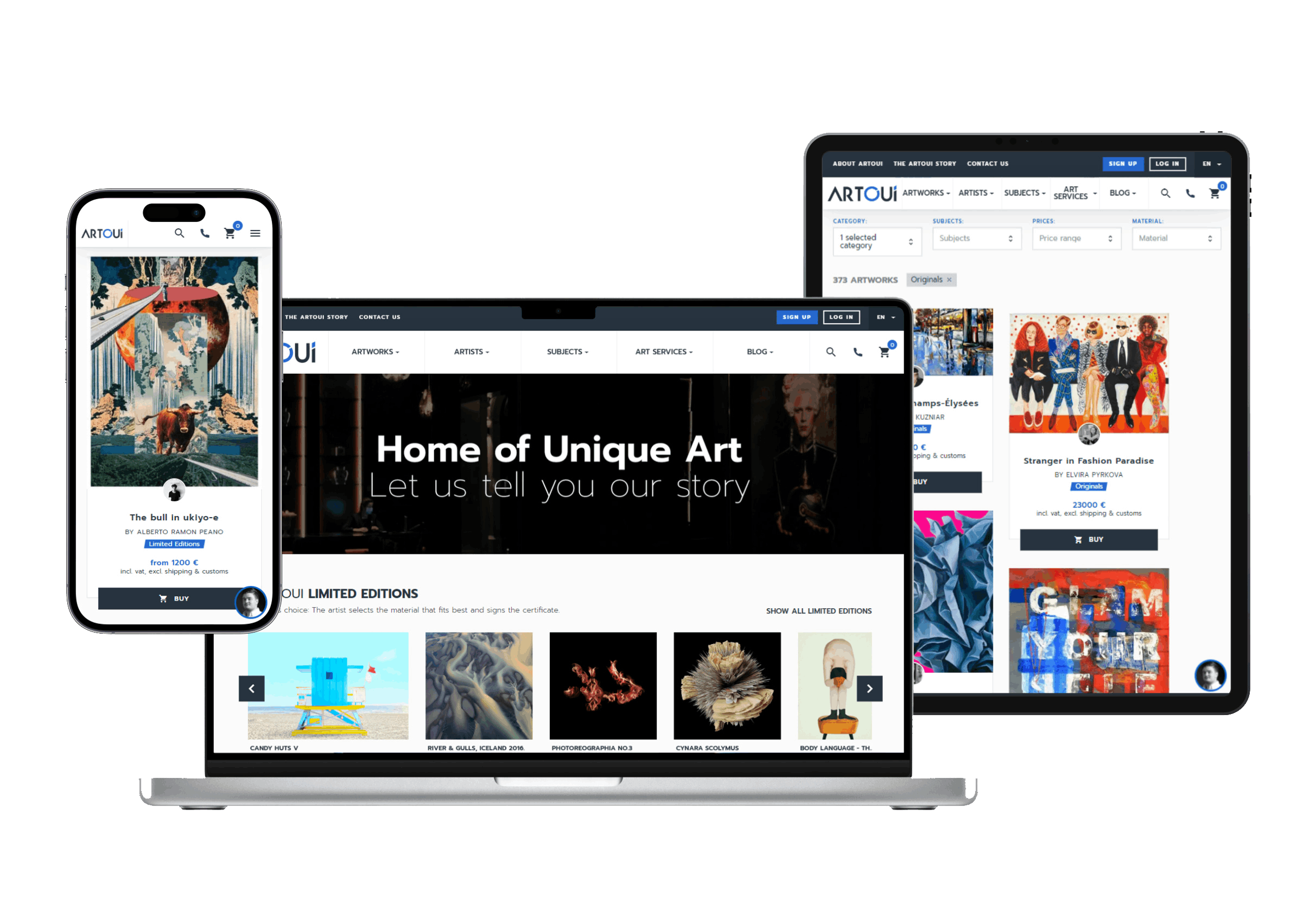
2 weeks
To form a team for MVP
5 months
To develop an MVP
58%
Lower budget compared to local rates
2 Years
Cooperation Time
Initially, they had a bug-ridden MVP from another team, which failed to meet their expectations. We took over the project and delivered a high-quality solution at 58% lower costs than local market rates.
Our Solution:
- Team Formation: In just two weeks, we assembled a team of five experts, including two developers, one architect, one project manager, and one QA.
- Code Fixing & MVP Development: We corrected issues with the existing code and designed the MVP in just five months, enabling ARTOUI to secure the funding for further development.
- Mobile App Launch: Delivered a top-tier mobile app with features such as artist and buyer accounts, integrated payment gateways, and a curated artwork gallery.
- UI/UX: Focused on creating user-friendly and visually appealing interfaces for each user type, ensuring seamless navigation and engagement.
- Cost Savings: The app was developed at a 58% lower cost than hiring local developers.
- Investment Secured: The successful MVP allowed the client to secure additional funding to continue developing the platform.
With our expertise and efficiency, let’s bring your mobile app ideas to life.
Book a consultation or request a quote today— we’re happy to talk with you either way!
Tags:
AUTHOR

Prystupa Eugene
Co-Founder
Eugene is a Co-Founder and CTO at Giraffe Software. He is seasoned technology executive with over 10 years of experience in the industry. Eugene leads the development and execution of the company's technology strategy, driving innovation and ensuring alignment with business goals.

Aligned in both project goals and work style, Giraffe Software has proven to be a productive, cost-effective partner. Their clear communication and adaptability have earned them an expanded scope.

Johannes Renaud
Director, LOOXIS GmbH
 Germany
Germany
Their reliability, tech expertise and quality of service set them apart. Giraffe Software is responsive and accommodating, establishes a smooth workflow through open communication.

James Lenoble
CEO, GrowMindGrow
 USA
USA
I am happy I can finally start gaining traffic and fulfill my goals. The vendor's collaboration method has been a strength, as they listen carefully to ensure complete understanding of objectives and challenges.

Ori Levi
Owner, Sosimple
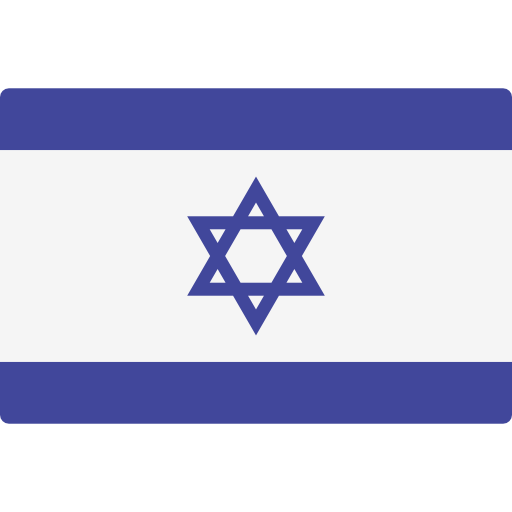 Israel
Israel
We liked their work so much we've brought them onboard other software development projects. Giraffe Software's project management, rates, and quality of code were all excellent.

Johan van der Walt
President and CEO, Evosolve
 Hungary
Hungary

 Ukraine, Dnipro
Ukraine, Dnipro
Mechnikova str. 19, office 705
 Estonia, Tallinn
Estonia, Tallinn
Harju maakond, Kesklinna linnaosa, Kaupmehe tn 7-120





 Cost efficiency
Cost efficiency
